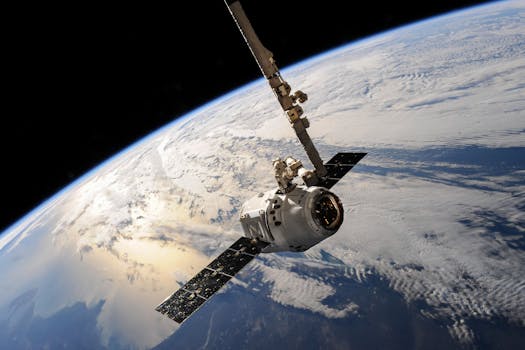
GEO Satellites: The Backbone of Global Connectivity
GEO satellites, or Geostationary Earth Orbit satellites, are a type of satellite that orbits the Earth at an altitude of approximately 36,000 kilometers, remaining stationary relative to a fixed point on the planet. This unique characteristic allows GEO satellites to provide continuous coverage of a specific region, making them an essential component of global connectivity. The focus keyword GEO satellites is used to describe the technology that enables communication, navigation, and remote sensing services.
GEO satellites have been in use for several decades, with the first GEO satellite, Syncom 2, launched in 1963. Since then, the technology has evolved significantly, with modern GEO satellites offering higher bandwidth, improved performance, and increased reliability. Today, GEO satellites play a vital role in various industries, including telecommunications, navigation, weather forecasting, and remote sensing.
Applications of GEO Satellites
GEO satellites have a wide range of applications, including telecommunications, navigation, and remote sensing. In the telecommunications sector, GEO satellites are used to provide broadband internet, mobile connectivity, and broadcast services. They enable communication between different regions, facilitating global connectivity and bridging the digital divide. For instance, GEO satellites are used to provide internet connectivity to remote and underserved areas, where terrestrial infrastructure is limited or non-existent.
In the navigation sector, GEO satellites are used to provide location information and timing signals, enabling accurate navigation and positioning. This is particularly important for aviation, maritime, and land transportation, where precise navigation is critical for safety and efficiency. GEO satellites are also used in weather forecasting, providing critical data on atmospheric conditions, ocean currents, and other environmental factors.
Benefits of GEO Satellites
The benefits of GEO satellites are numerous and significant. One of the primary advantages is their ability to provide global coverage, enabling communication and navigation services to be delivered to remote and underserved areas. GEO satellites are also highly reliable, with a lifespan of up to 15 years or more, depending on the specific mission and technology used.
Another significant benefit of GEO satellites is their ability to provide high-bandwidth services, enabling the transmission of large amounts of data, including video and audio content. This makes them ideal for applications such as broadband internet, mobile connectivity, and broadcast services. Additionally, GEO satellites are relatively low-cost compared to other types of satellites, making them an attractive option for many industries and applications.
Challenges and Limitations of GEO Satellites
While GEO satellites offer many benefits, there are also challenges and limitations to their use. One of the primary challenges is the increasing congestion of the GEO orbit, which can lead to interference and signal degradation. This is particularly problematic for telecommunications and navigation services, where signal quality and integrity are critical.
Another challenge facing GEO satellites is the risk of space debris, which can pose a significant threat to the operational integrity of these satellites. Space debris, including old satellites, rocket parts, and other objects, can collide with operational satellites, causing damage or even complete failure. This highlights the need for responsible satellite operations and debris mitigation strategies.
Future of GEO Satellites
The future of GEO satellites is exciting and rapidly evolving. With advancements in technology, including the development of new propulsion systems, materials, and antenna designs, GEO satellites are becoming more efficient, reliable, and cost-effective. The increasing demand for global connectivity and the growing need for high-bandwidth services are driving the development of new GEO satellite constellations and systems.
In conclusion, GEO satellites play a vital role in providing global connectivity, enabling communication, navigation, and remote sensing services. While there are challenges and limitations to their use, the benefits of GEO satellites far outweigh these drawbacks. As the demand for global connectivity continues to grow, the importance of GEO satellites will only continue to increase, driving innovation and advancement in this critical technology.